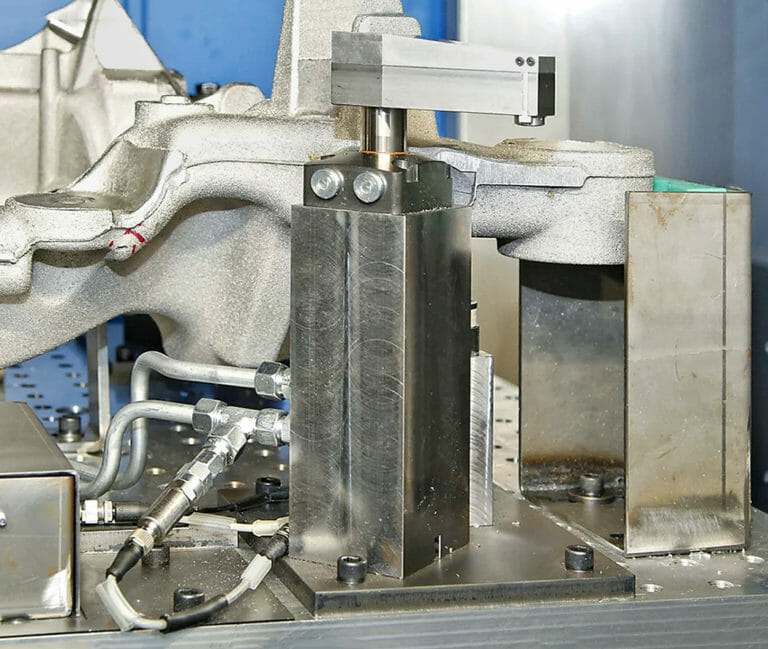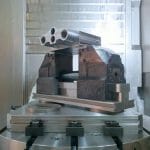Industry 4.0 compatible project develops workholding that doubles as inspection equipment on a 5-axis machining centre
Two German firms, 5-axis vertical machining centre manufacturer Wenzler (Heller group) and workholding equipment specialist Roemheld, have developed a process that allows a casting or other component to be secured ready for machining, while at the same time checking it for accuracy of form and position before machining starts.
It avoids adding value to defective workpieces that will later be scrapped, increasing process reliability, raising productivity and lowering production costs. Details of the project are available to manufacturers in Britain and Ireland through Roemheld UK (www.roemheld.co.uk). A video of the system in operation may be viewed at: www.youtube.com/watch?v=6HBBS1nFlX8
The idea was conceived by Wenzler, which wanted to be able to offer its customers, particularly in the automotive industry, turnkey production centres for reliable machining of aluminium chassis and suspension components, 24/7. The company’s technical manager Sebastian Knaus said: “We wondered in early 2019 how workholding technology could contribute to making our customers’ production even more stable and efficient.”
Already familiar with Roemheld’s workholding equipment, which he describes as “sophisticated, reliable, and sturdy”, he contacted the Friedrichshütte supplier’s key account manager Benjamin Nagel in May 2019.
Development of the innovative clamping technology was based on a cast aluminium rear axle frame secured in a test fixture in Wenzler’s technical centre in Spaichingen. The pilot phase ended in spring 2020 and this year it will be used for the first time to assist the series production of aluminium structural components at a German automotive supplier.
The innovative concept is based on swing clamps from Roemheld with integrated pressure sensors able to detect cost-effectively and easily the accuracy of the workpiece about to be machined. The intelligent clamping technology checks the parts for defects and contour variations, detects fixturing errors and provides information on the position of the component and the applied clamping forces during machining.
The quality of the resulting parts is continuously monitored and seamlessly documented, which is particularly important for lightweight vehicle components that are increasingly of thin-walled design.
In the case of the rear axle frame casting in Wenzel’s test centre, the project partners first defined the information that would be needed for detecting the status of a fixtured component. It was found that by monitoring the clamping force at two selected points and through measurement of the stroke of one clamping arm, it is possible to determine whether casting defects or contour variations are outside tolerance. Other information provided includes whether a good workpiece is located properly in the fixture and if the applied clamping force is within specified limits.
Two standard hydraulic swing clamps from Roemheld were equipped with pressure sensors and two contact sensors are used on the fixture to collect the data. Clamping force and the reactive holding force are recorded at the first location while at the second, another clamp performs a similar function and in addition, integrated stroke measurement determines the position of the clamping arm. An extra pressure sensor positioned close to this swing clamp indirectly measures the holding force.
The power supply to the sensors is inductive and so also is communication of data between the fixture and the machine control. As all elements are encapsulated, they are less susceptible to interference and contamination. Measured data is displayed and compared with the target values and machining starts only if the results are in tolerance.
Sebastian Knaus is delighted with the project: “We had a close and productive exchange with Roemheld and quickly achieved a great result – higher efficiency and process reliability, less scrap and better component quality, all at lower cost. Transparency, control and manufacturing documentation are also improved.”








